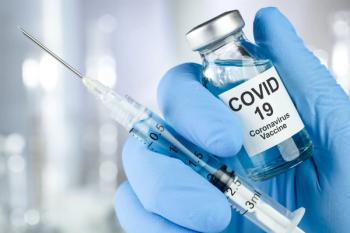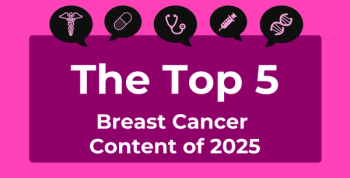
Exploring Strategies for Timely Diagnosis, Comprehensive Care in Hidradenitis Suppurativa
Researchers reviewed clinical features of hidradenitis suppurativa and provided strategies to promote earlier identification, differentiation from common mimickers, and timely referrals for multidisciplinary management.
Authors of a review published in
“Because of poor recognition of HS within the medical community, the average time between onset of symptoms to diagnosis is approximately 10 years. During this period, patients may experience disease progression that can lead to disfigurement and disability. Additionally, patients often experience fragmented care for flare management at acute and ambulatory care facilities with a variety of providers,” noted the study authors.
Clinical Presentation and Comorbidities
In the absence of a diagnostic biomarker, HS is characterized by 3 major diagnostic criteria: painful nodules, abscesses, and draining tunnels on the skin; involvement of typical anatomic sites (eg, axillae, inframammary and intermammary folds); recurrence and chronicity.
HS onset most commonly occurs in early adulthood. Women are shown to be predominantly affected by HS, with a disproportionate impact shown among Black individuals, who were found in a
Pain, drainage, and odor are among the most burdensome symptoms of the disease, with a substantial quality of life impact also reported among patients.
“There is an opportunity for primary care and specialty providers to support timely recognition of HS and screening/management for the numerous comorbid conditions associated with the disease,” the authors wrote.
Common comorbidities in HS include endocrine and metabolic-related conditions, cardiovascular disease, obstetric risks, gastrointestinal disorders, musculoskeletal diseases, and mental health disorders. Mental health disorders of depression, anxiety, and substance abuse disorder are notable
“The substantial emotional and psychological impact of hidradenitis suppurativa has also been associated with low self-esteem and poor body image, which can negatively impact social and intimate relationships,” the authors noted.
They also wrote that primary care providers have an important role in managing and coordinating care for the treatment of mental and psychological comorbidities to help manage and improve HS disease burden. They also called for a comprehensive comorbidity screening strategy for patients with HS to achieve and maintain overall health.
Therapeutic Options and Disease Management
Treatment and management of HS should be through a multifaceted approach to care, the researchers explained, which includes medical and surgical management, as well as screening for and managing associated comorbidities. Several treatment options are available for the disease:
- Topical and systemic antibiotics: antiseptic cleansers (limited evidence supporting their efficacy), oral tetracyclines for mild disease, and combination oral antibiotic regimens have also shown efficacy
- Biologics: for patients with moderate to severe disease,
adalimumab is FDA approved and has shown significant improvements in lesion counts, pain, and disease activity. Other biologics have demonstrated potential efficacy of infliximab, ustekinumab, anakinra, bimekizumab, andsecukinumab Surgery : Deroofing and wide local excision were mentioned, with the researchers highlighting the importance for clinicians to optimize medical therapy to reduce the inflammatory burden prior to surgical interventions and to emphasize that surgical interventions are not curative or protective against HS
Further strategies touted by the reseachers to improve care management included referral to resources that can support awareness in and education of patients with HS related to disease course, disease impact, and opportunities to engage behaviors that may support overall health. Better understanding of the inflammatory nature of HS and the potential for immunomodulating therapies to control disease symptoms were also mentioned as examples of key information to provide patients with HS.
“Timely disease recognition and management are essential to controlling symptoms, mitigating disease progression, and improving quality of life for patients with HS,” the researchers concluded. “Comprehensive care strategies coordinated among medical and surgical disciplines are necessary to improve the overall health of patients with HS.”
Reference
Garg A, Naik H, Kirby JS. A practical guide for primary care providers on timely diagnosis and comprehensive care strategies for hidradenitis suppurativa. Am J Med. Published online October 14, 2022. doi:10.1016/j.amjmed.2022.09.025
Newsletter
Stay ahead of policy, cost, and value—subscribe to AJMC for expert insights at the intersection of clinical care and health economics.









































